Cost per lead (CPL) shows how efficiently marketing spend converts into opportunities. For SMBs working with limited resources, it’s a simple way to see which campaigns deliver real value.
The key to keeping costs under control is refining your targeting so you attract high-quality leads that are more likely to convert.
In this article, you’ll learn how to calculate cost per lead, overcome the common challenges associated with this metric and practical ways to lower your expenses while filling your pipeline with leads that actually convert.
Key takeaways for cost per lead
CPL measures how much it costs to acquire a qualified lead and shows marketing efficiency.
This metric helps SMBs optimize budgets, improve targeting and maximize ROI from limited marketing spend.
High CPL often comes from poor targeting or low conversion, while refining audience focus and improving landing pages can lower costs.
Pipedrive’s CRM tracks lead sources, automates follow-ups and analyzes campaign performance to help SMBs reduce CPL and convert more leads. Sign up for a free 14-day trial to see which channels bring the best ROI.
What is cost per lead, and how do you calculate it?
Cost per lead (CPL) shows how much it costs to acquire a qualified lead. Businesses use this metric to assess the efficiency of their lead generation efforts.
A good cost per lead varies from business to business. Typically speaking, a low CPL indicates that your marketing campaigns reach the right audience at the right time.
If your CPL rises from $20 to $60, your marketing budget feels the effects immediately.
A higher CPL could signal:
Your paid ads aren’t resonating with your audience
You’re targeting too broad a segment
Your landing page needs optimization to convert visitors into sign-ups
Here’s how to calculate cost per lead:
CPL = Number of leads generated / total marketing spend
Let’s use an example to demonstrate how the cost-per-lead formula works: a SaaS company spends $2,000 on a LinkedIn ad campaign to promote a free trial. Over the campaign, they capture 100 leads through web forms.
Here’s how the calculation works:
CPL = 100 / $2,000 = $20
In this example, your CPL is $20 per lead, meaning every lead you capture costs $20 to acquire.
You can now compare this against your average customer lifetime value to judge if the campaign was worthwhile.
What can SMBs achieve by tracking and optimizing CPL?
CPL shows SMBs how efficiently you turn marketing spend into real opportunities.
By tracking and optimizing CPL, you can better allocate sales budgets, improve campaign targeting and fill your sales pipeline with leads that deliver a strong return on investment (ROI).
Here are the main benefits of tracking and optimizing CPL, explained in more detail.
Better budget allocation
CPL tells you exactly how much it costs to attract a sales prospect, making reducing campaigns that don’t deliver results easier.
For instance, a company running a pay-per-click (PPC) marketing campaign on LinkedIn and Google Ads. LinkedIn generates leads at $20 CPL, while Google Ads is $60 CPL.
Measuring CPL means you can redirect more spending to LinkedIn, generating three times the number of leads for the same investment.
Using a customer relationship management (CRM) system like Pipedrive helps you manage campaign performance to optimize spending.
Here’s an example of a campaign performance report in Pipedrive:
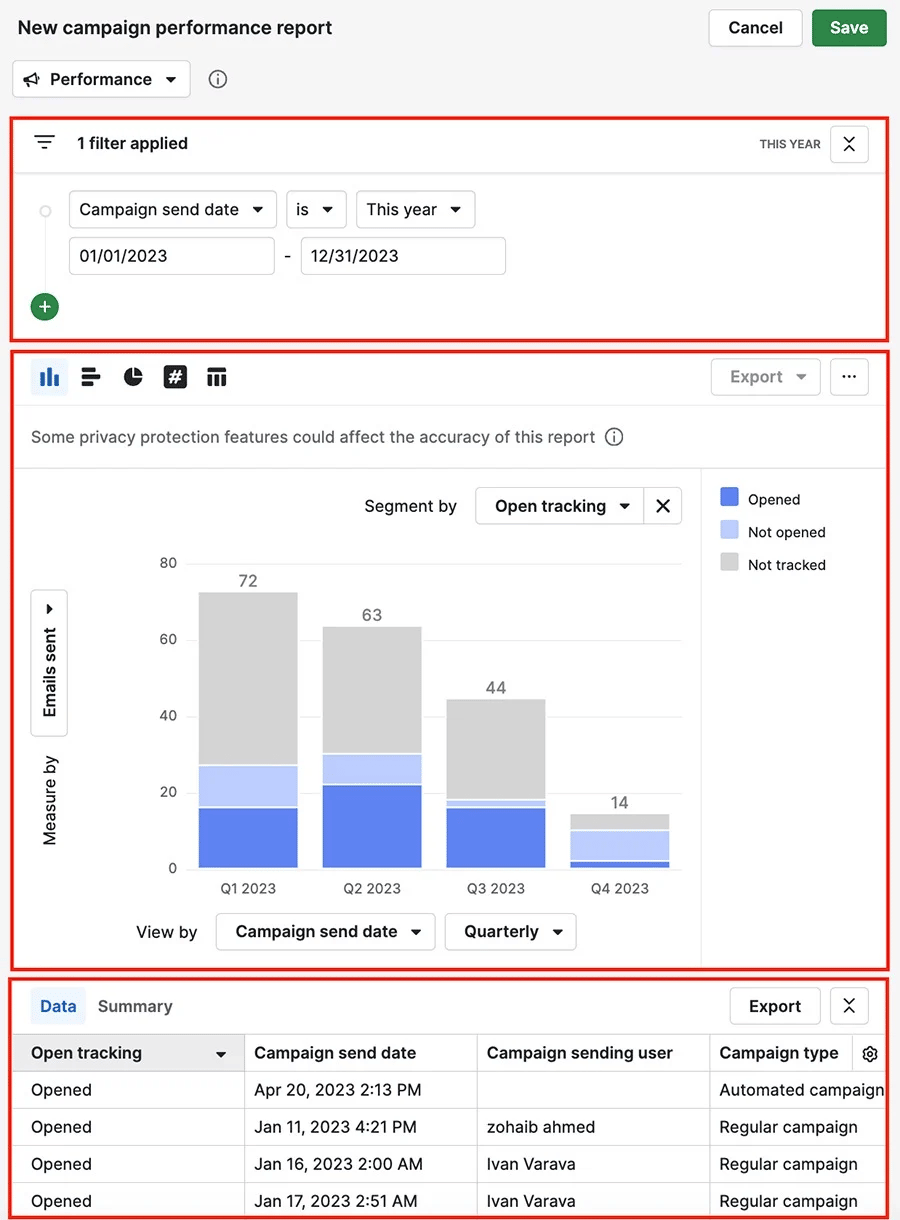
With these insights, you can see if leads are converting into deals and adjust the campaign to maximize your budget.
Pipedrive in action: Spark Interact uses Pipedrive’s campaign analysis to track where leads come from, the type of enquiry (inbound or outbound) and the landing page URL. The business can see which channels drive the most valuable leads, optimize targeting and focus spend on campaigns that deliver the best results.
Building sustainable growth
Measuring CPL ensures that your business can grow without overspending.
For growing companies, sustainable growth relies on maintaining affordable customer acquisition costs (CAC).
Imagine a financial service business is scaling fast. Last quarter, its CPL was $25, and the sales team converted 15% of leads into customers.
This quarter, the CPL has risen to $40 while the conversion rate remains at 15%. The business is still bringing in leads, but each new customer costs significantly more to acquire, cutting into profitability.
By monitoring CPL, companies can spot these trends early and adjust campaigns before margins erode,creating healthy profit margins and allowing your business to scale successfully.
Effectively measure marketing activity
CPL helps SMBs quickly identify which digital marketing channels deliver the best value.
As a result, they can invest in what works and reduce their expenditures on what doesn’t.
For example, if one channel consistently generates cheaper, high-quality leads, SMBs can reallocate budgets to maximize return.
Let’s say your business runs lead generation campaigns on Facebook and Google Ads:
Facebook Ads: $1,500 spend – 100 leads = $15 CPL
Google Ads: $1,500 spend – 30 leads = $50 CPL
In this case, Facebook delivers more cost-effective leads. By reallocating more of your budget to Facebook, you can lower your overall CPL and fill your sales pipeline with higher-value opportunities.
Pipedrive in action: Combat Ready uses Pipedrive’s Insights dashboards to measure marketing effectiveness, track lead sources and monitor financial performance. These dashboards provide a clear picture of sales progress and customer behavior. The team uses them to identify winning patterns, optimize campaigns and track deals from start to finish.
Measuring CPL also helps SMBs measure marketing effectiveness in line with industry performance. By comparing your performance with the average cost per lead by industry, you can see if your campaigns are effective or overspending.
For example, if your company’s CPL is $50 while the industry average is $30, it signals that your targeting or messaging may need adjustment.
This insight helps you make smarter decisions about which channels to invest in, reallocating budget to the campaigns that generate the highest-quality leads at the lowest cost.
Download Your Sales and Marketing Strategy Guide
Setting effective goals
Using CPL as a key performance indicator (KPI) makes goal-setting more concrete.
SMBs can set targets for lowering cost per acquisition (CPA) over time, benchmark different campaigns against one another and tie marketing spend directly to sales outcomes.
For example, say that your average CPL is $30 at the start of the year. You set a goal to bring it down to $25 within six months by testing new ad creatives and optimizing landing pages.
By the end of the period, you lower your average CPL to $24 while maintaining the same conversion rate. This improvement shows that your marketing is more cost-efficient and provides a clear win to share with your team.
Note: Sharing internal wins motivates sales and marketing teams, showing that their efforts drive tangible results. This recognition boosts morale, increases sales productivity and improves business performance.
5 common CPL challenges and how to overcome them
SMBs face challenges (like poor targeting and limited budgets) that increase costs and reduce marketing efficiency.
Identifying these obstacles can help you lower CPL, improve lead quality and maximize ROI.
Here are five common CPL challenges SMBs encounter and ways to overcome each.
1. High CPL from poor ad targeting
Poor targeting drives up CPL because marketing spend reaches people who are unlikely to convert.
By narrowing their audience and refining campaigns, SMBs can attract more qualified leads for less money.
Imagine that you target a broad audience on LinkedIn, aiming your campaign at “all professionals”. You spend $2,000 and generate 50 leads – a CPL of $40 – but only a few convert.
You refine your targeting to your ideal audience (like marketing managers in mid-sized tech companies). As a result, you’re more likely to attract qualified leads who are ready to engage.
Doing so lowers your CPL and increases the chances that these leads become paying customers.
Here are some ways to improve ad targeting:
Use lookalike audiences. Targeting lookalike audiences focuses your ads on consumers who share characteristics with your best customers, like job titles or customer demographics. Reach these users by uploading top-performing customer lists to ad platforms (the exact process varies depending on the system).
Target specific locations, demographics or industries. Relevant customer segments help you reach people most likely to convert. Use insights from your CRM or past campaigns to identify the most valuable regions, job titles, industries or company sizes. Adjust your ad platform settings to focus on these high-value groups.
Refine ads based on performance data. Monitoring performance metrics lets you see which marketing strategies work best. Click-through rates (CTR), cost per click (CPC) and conversion rates are a few examples. Regularly analyze this data to adjust your audience, messaging or ad placements for the best CPL.
Use these ad targeting strategies to allocate marketing spend on high-potential leads, reduce CPL and fill your sales pipeline with prospects more likely to convert.
2. Low conversion rates on landing pages
A poor landing page can prevent leads from converting and increase your CPL even with high traffic.
Improving the user experience helps you convert existing traffic into qualified leads without spending more on ads.
Say that a small SaaS company runs a campaign that drives 1,000 visitors to its trial signup page, but only 20 people fill in the form, resulting in a CPL of $50.
The landing page’s usability is why conversions are low and the CPL is high. The page has a high load time, the sign-up form is overly complex and the CTA is unclear.
The company shortens the form, adds a clear CTA (like “start your free trial today”) and removes slow-loading elements (such as videos).
Consumers can now navigate the page with ease. As a result, the company is more likely to boost conversions and reduce CPL.
Here are some other ways to optimize landing pages to lower CPL:
Ensure landing pages align with ads. Consistency between ad messaging and landing page content builds trust and encourages conversions. Match headlines, visuals and offers so visitors immediately see the value promised in the ad.
Test layouts, headlines and images. Small changes can significantly improve conversion rates and lower CPL. Run A/B tests on different combinations of headlines, images and form placements. Analyze which versions generate the most qualified leads.
Optimize for mobile. Given that 91% of the US population has a mobile device, a poor mobile experience can significantly impact conversions. Ensure forms, buttons and layouts are mobile-friendly, load quickly and allow visitors to complete actions easily.
Optimizing landing pages turns more web traffic into qualified leads, builds a strong sales pipeline and lowers CPL.
3. Limited marketing budgets
SMBs often lack the budgets to test multiple channels, run large-scale campaigns or outbid larger competitors in ad auctions.
Focusing on proven strategies and maximizing existing assets helps these companies achieve strong results despite limited budgets.
A larger organization may have the budget to test 10 different ad platforms simultaneously, while an SMB might struggle. Instead, the smaller company could focus on one or two proven channels to maximize ROI and keep CPL under control.
Here are some ways to maximize smaller budgets:
Use organic marketing. Organic strategies (like search engine optimization, social media and email campaigns) provide steady leads without constant ad spend. Share customer success stories, publish helpful content and build email marketing sequences to stay top of mind.
Repurpose content. Reusing existing content across different channels reduces production costs and extends reach. For example, turn a sales webinar into blog posts, social media clips and an email series to engage audiences without creating content from scratch.
Focus on high-performing channels. Concentrating the budget on the platforms that deliver the most qualified leads prevents wasted spend. Use reporting tools in your CRM to track lead sources (like web forms or social media) and reallocate budget to those channels.
Pipedrive’s CRM lets SMBs see where leads come from. Use the lead source field to understand whether users convert from web forms, emails and so on.
Here’s how this appears in Pipedrive:
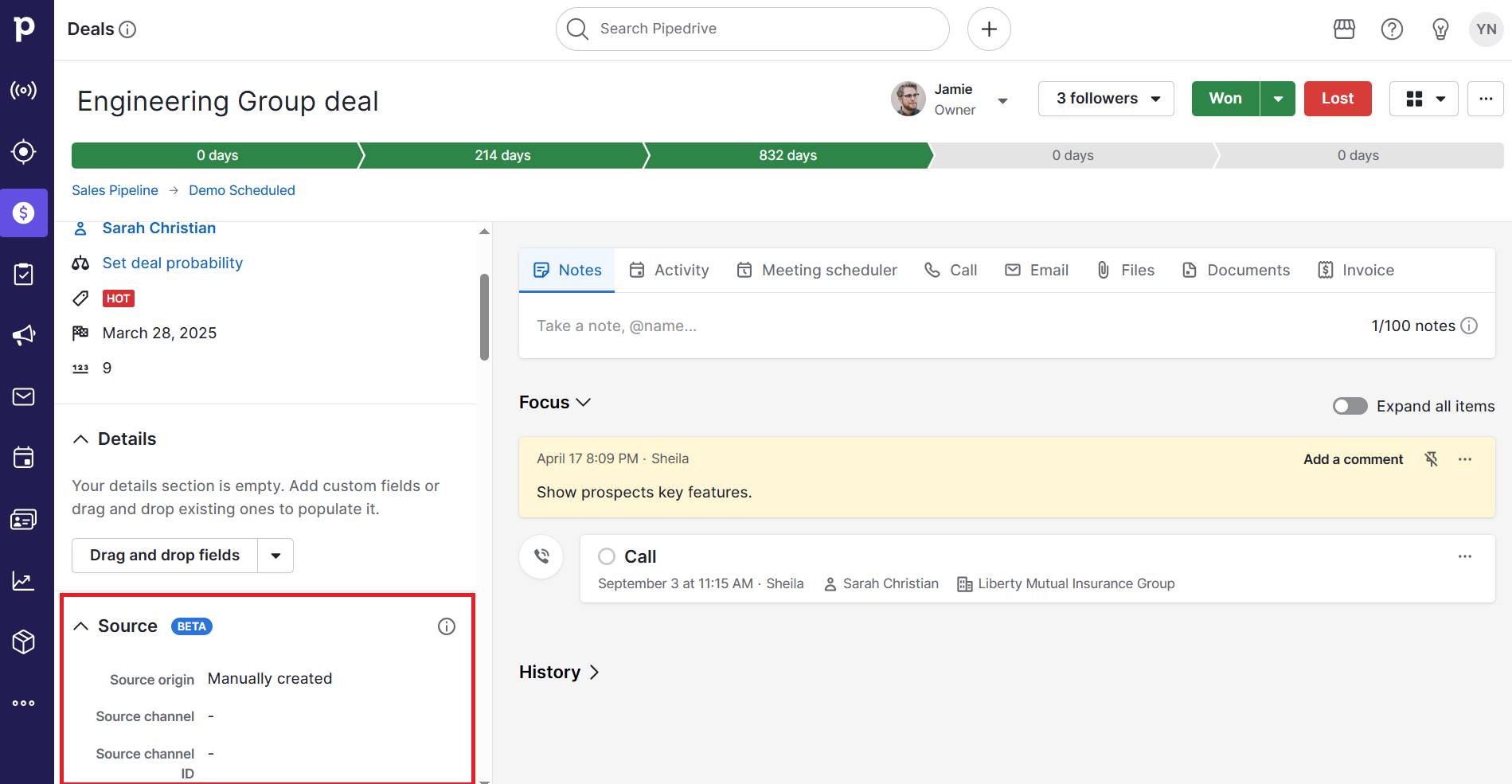
These insights help you identify the top-performing channels, allowing you to easily reallocate budgets to lower your CPL and get the best return.
4. Poor lead quality
Spending time and money on poor-quality leads that don’t convert increases your CPL.
Defining and prioritizing quality leads helps you focus budgets on prospects with real potential.
Say that an SMB runs ads that bring in 100 leads. However, only two convert.
The company was targeting consumers outside of its ideal customer profile. The CPL is high in this situation because most of those leads were never a good fit.
The same budget generates fewer but more valuable customers by scoring leads and targeting high-quality prospects.
Instead of paying for 100 unqualified contacts, the business attracts 20 decision-makers far more likely to engage and buy. This shift reduces wasted spend, improves sales efficiency and builds a healthier pipeline.
Here are some ways to improve lead quality:
Define a “qualified lead”. A clear definition helps marketing and sales teams focus on the right prospects. Use factors like industry, company size and decision-making authority to distinguish valuable leads from unqualified ones.
Align messaging with your ideal customer expectations. Consistent, targeted messaging attracts prospects that fit your customer profile. Match ad copy and landing page content to your best customers’ pain points and goals so only the most relevant leads engage.
Use lead scoring. Lead scoring helps you rank prospects based on their conversion likelihood, saving time and reducing wasted spend. In Pipedrive, for example, you can set filters to surface leads that meet your ideal criteria. Then, you can automatically focus sales efforts on the best opportunities.
Prioritizing lead quality helps you lower your CPL by spending time and money on prospects who are more likely to convert.
Start generating quality leads with your B2B Prospecting ebook
5. Lack of tracking and analytics
Analytics lets you see which channels produce high-quality leads and which drain your budget, helping lower CPL and improve ROI.
Without proper tracking, SMBs don’t know which campaigns drive affordable leads.
For example, if a company runs campaigns across Facebook, Google Ads and LinkedIn but doesn’t sufficiently track results, it may spend money on a channel that produces low-quality leads.
By monitoring conversions, SMBs can reallocate budgets to channels that generate the most qualified potential customers.
Here are some ways to improve tracking and analytics:
Use free analytics tools. Platforms like Google Analytics show how much each channel costs per lead and how visitors interact with your site. Regularly reviewing these insights helps identify high-CPL channels that need adjustment.
Review data weekly to catch rising CPL early. Monitoring metrics regularly ensures you spot underperforming campaigns before they drain your budget. Use these insights to tweak targeting, messaging or ad spend for better results.
Set up conversion tracking. Conversion tracking lets you see which ads and campaigns drive leads and sales. Use tools like Google Ads, Facebook Ads or your CRM analytics to capture conversions and connect them to specific campaigns.
Pipedrive’s reporting dashboard gives SMBs a clear view of which campaigns, channels and reps generate the best ROI. You can see leads by source, track conversion rates and identify high-performing campaigns at a glance.
Here’s an example of a sales dashboard in Pipedrive:
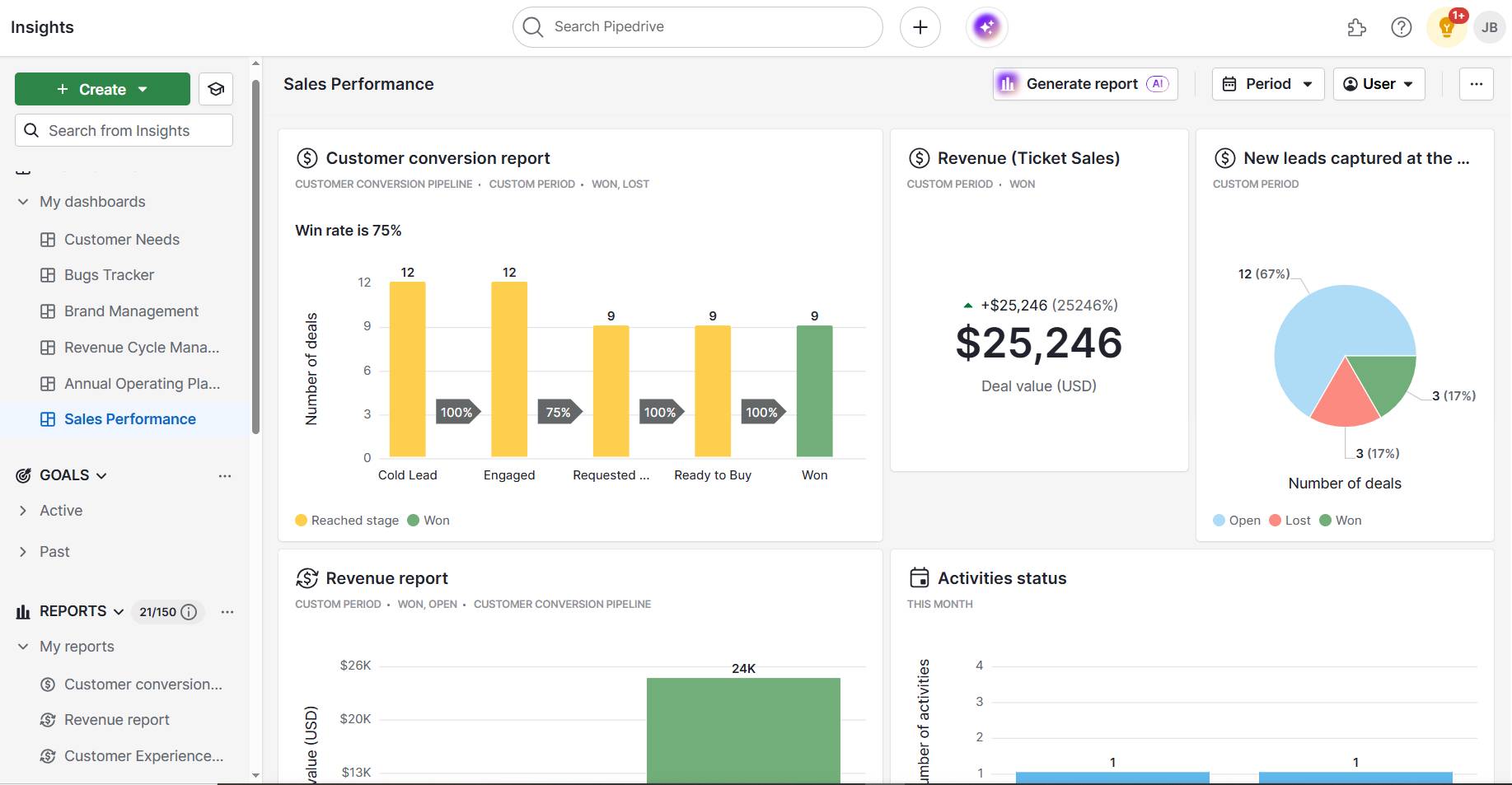
With these insights, SMBs can quickly cut budget from high-CPL sources and reallocate it to channels that deliver more qualified leads. As a result, businesses ensure that ad spend drives real business results
Simple but effective tips for reducing CPL
Reducing CPL helps SMBs get more value and ROI from sales and marketing budgets.
Some ways to achieve this are leveraging partnerships, following up with leads quickly and testing lower-cost ad placements.
Take a look at these activities in more detail.
Use partnerships to share marketing costs
Instead of carrying the full cost of lead generation, collaborate with non-competing businesses that target the same audience.
Teaming up with these businesses splits the price of campaigns, provides access to new prospects and reduces CPL without increasing your spend.
Take QuickBooks, Intuit and Amazon, for example. The companies partnered to let users integrate data into accounting systems.
QuickBooks and Intuit posted a joint update on Instagram about the partnership:
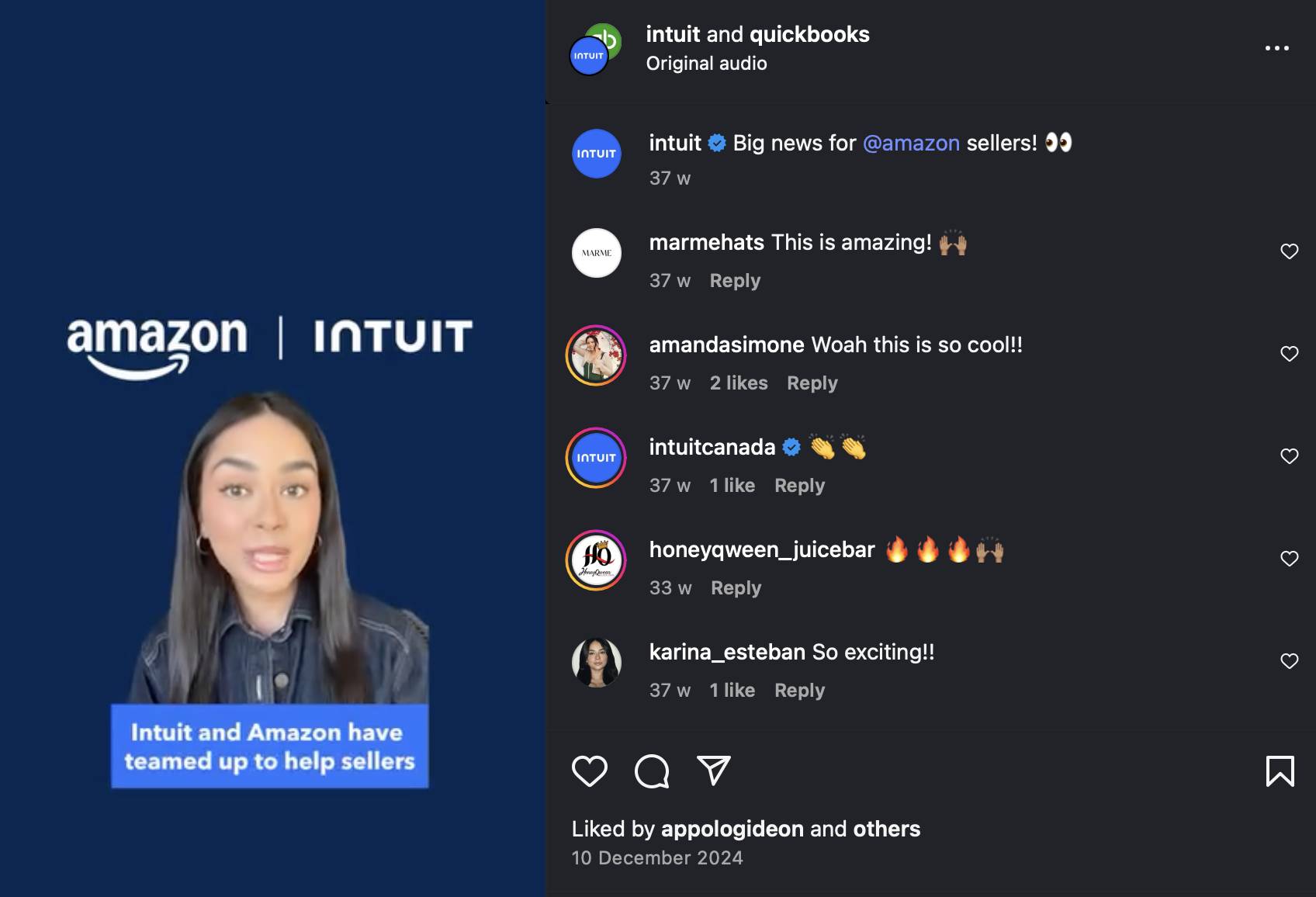
Amazon wrote and released a press release about the integration:
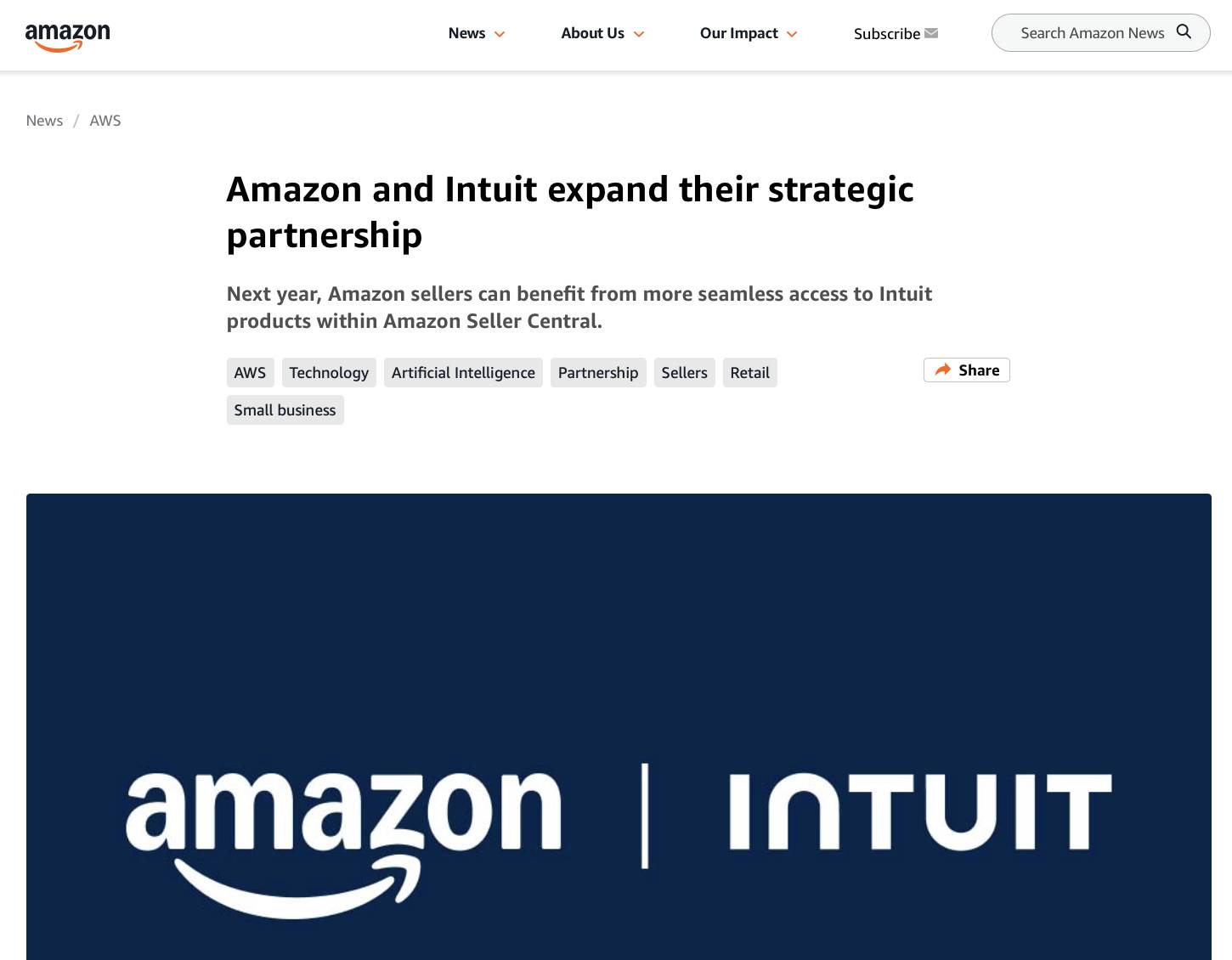
QuickBooks gains visibility with Amazon Business users, while Amazon builds credibility by aligning with a trusted accounting platform.
By co-marketing the integration, each company gets broader exposure without carrying the full marketing cost, making lead generation more efficient.
Here are some tips to build marketing partnerships:
Identify potential brand partners. Look for non-competing businesses that share your target audience, similar customer pain points or complementary products. Find them on social media platforms like LinkedIn, industry forums and local business networks.
Evaluate alignment. Choose partners whose brand reputation and values align with yours. Partnering with the right companies builds brand awareness and credibility with potential leads.
Agree on scope and cost. Decide which marketing activities to co-run and split costs proportionally. For example, will you host joint webinars, create e-books or run social media campaigns?
Choosing the right partners and sharing marketing efforts lets SMBs expand their reach and capture high-quality leads while maintaining a low CPL.
Optimize follow-up speed
The faster you follow up with a lead, the more likely they are to enter the sales funnel and become a paying customer.
Quick follow-ups increase the conversion rate per lead, spreading your marketing spend over more paying customers and lowering your CPL.
For example, if a small industrial equipment manufacturer receives 50 leads from a targeted LinkedIn ad campaign, it must act quickly.
If the sales team waits several hours to follow up, leads might lose interest or move on to competitors. By contacting each lead quickly, the company has a better chance of converting more prospects without increasing ad spend.
Take a look at some of the ways to increase follow-up speed:
Prioritize lead response times. Set internal guidelines so sales reps contact leads within a set window, like 15 minutes. Track timeframes in your CRM to ensure accountability and improve response speed over time.
Implement automated follow-up sequences. Use email or SMS sequences to engage leads that don’t convert immediately. Automated nurturing keeps prospects warm, increasing conversion without overspending.
Use a CRM with automated notifications. Set rules so that new leads from web forms, AI chatbots or ad integration trigger instant alerts to salespeople. Immediate notifications ensure no lead sits idle and increase the chance of conversion.
Pipedrive’s sales CRM is well-equipped to automate follow-ups and reminders.
Leads from web forms, chatbots or marketplace integrations (with platforms like Facebook Ads or Google Ads) flow directly into the CRM. You can then create automated notifications so that sales reps can immediately reach out as soon as they enter the system.
You can also automate email sequences to ensure every lead receives prompt follow-ups. These automations let you reach out to leads when they show interest or engage with your content.
Watch the video below to learn how to set up an automated campaign in Pipedrive:
Combining instant notifications with automated emails, SMBs can maximize conversion rates, shorten the sales cycle and lower CPL.
Test lower-cost ad placements and formats
Testing ad placements and formats means running different ads across channels to see which ones perform best with your audience.
The process helps you learn what your audience responds to, how to increase sales and reduce CPL.
For example, a B2B manufacturing company might test two LinkedIn ads with different CTAs. One offers a free demo, and another provides a downloadable guide.
Testing these two CTAs helps the business identify which message generates the most qualified leads at a lower cost. As a result, the company can allocate more spend towards the most effective ad and lower the B2B cost per lead.
Here are some of the ways to put this into practice:
Allocate a test budget. Set aside 10–20% of your ad budget to experiment with new placements, formats or creative variations. This spending allows you to gather sales data without risking your core campaigns.
Run split tests. Trial different CTAs, headlines or visuals in the same campaign to see which version delivers more conversions at a lower CPL. These tests help you quickly identify what resonates with your audience.
Compare channels. Place similar ads on LinkedIn, Google Display or industry-specific forums to determine which channel offers the best CPL. These comparisons help you prevent overspending on underperforming platforms.
Consistently testing and adjusting your ads lets you focus your budget on formats and channels that deliver the best results.
Final thoughts
Understanding CPL helps SMBs spend less time and money on ads that don’t convert and focus on channels that bring in high-quality leads.
To maximize your budget and reduce CPL, test different ad formats, optimize your follow-up sequences and work with partners to reduce ad spend.
With Pipedrive’s CRM, you can easily track lead sources, automate follow-ups and analyze campaign performance. Use these insights to reduce CPL while filling your pipeline with leads that convert.
Sign up for a free 14-day trial to turn marketing spend into qualified leads and customers.







